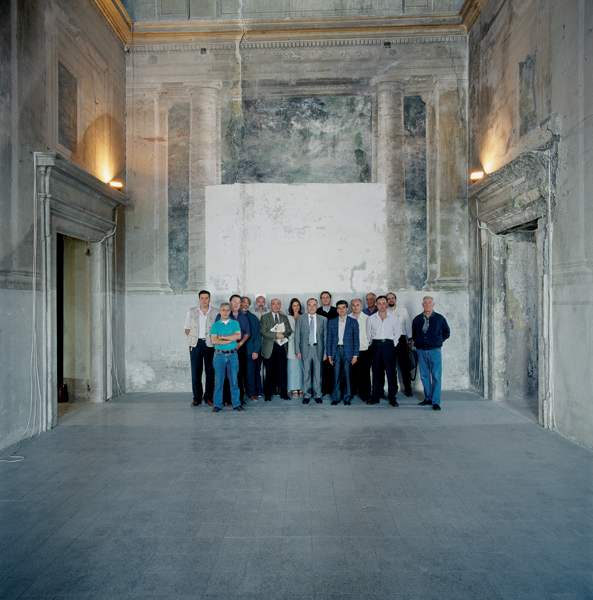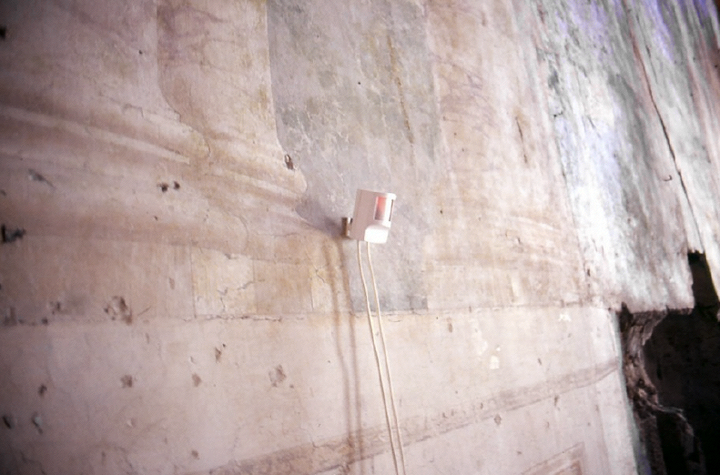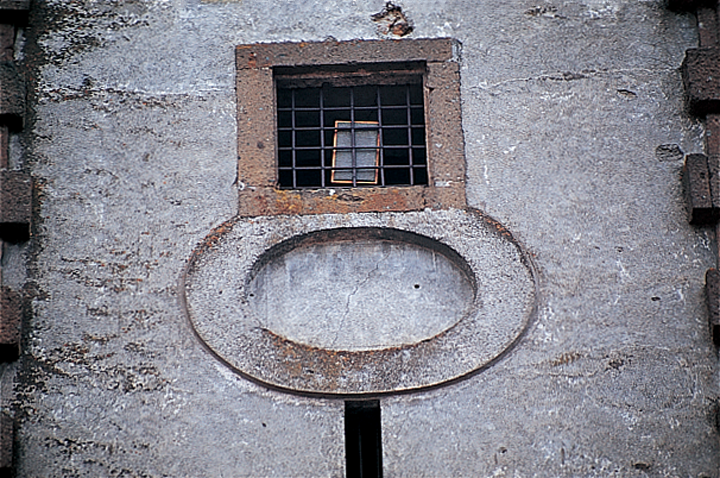“Verso Sud”, curated by Associazione Culturale Zerynthia, Palazzo Doria Pamphilij, Valmontone (Rome), 2000
Dedicated to the young women and young men who have danced in this room
The work draws inspiration from the historical events linked to the host space, the Sala del Principe in Palazzo Doria Pamphilij at Valmontone (Rome); in particular, during World War II, when the building offered shelter to 400 persons whose homes had been destroyed by bombing, the room was used as a dance hall by the younger inhabitants on holidays. The artist positioned ten sensors on the walls, connecting them to speakers placed on the streets around the building. Whenever a spectator moved inside the room, the speakers would play a musical motif, chosen by the senior citizens of the area and dating back to that period of their youth. The sound of these songs of the past would tell the community that in that moment someone was “moving” in that place, which had been so emblematic of the life of that period.
As in many other works by the artist, meetings with the local residents were required for the formulation of a commentary on the dynamics of the contemporary art system – in this case, the indifference often displayed by artists regarding the spaces in which they are asked to intervene. “I went to meet the people there, and they helped me to discover the history of that palazzo, the way it had been used in the postwar years as a shelter for those who had lost their homes – the artist says. – In the room I had been assigned, young people gathered on Saturday evenings to dance and to regenerate their sense of everyday existence. Together we found old records from that period, and with a sound system, with sensors and speakers, when someone entered the room the music would be heard in the city. The melodies of the songs reached everywhere, aimed above all at the people who had sought temporary lodging in the palazzo, but not in the exhibition space, where there were no speakers. It could be heard because the sound was reflected on the walls outside, but everything happened out there, aimed towards the city, like a gift to those who had lived here, waiting for the reconstruction. It is a work that has to do with the ‘void’ of architecture, and sound was the material best suited to all this. But the purpose of intervening in public space without invading it, superimposing my project on a collective memory, was the central theme: I was interested in this critical position with respect to the art system” [Achille Bonito Oliva, “Alberto Garutti”, in Enciclopedia della parola. Dialoghi d’artista. 1968-2008, Skira Editore, Milan, 2008, pp. 396-405].


